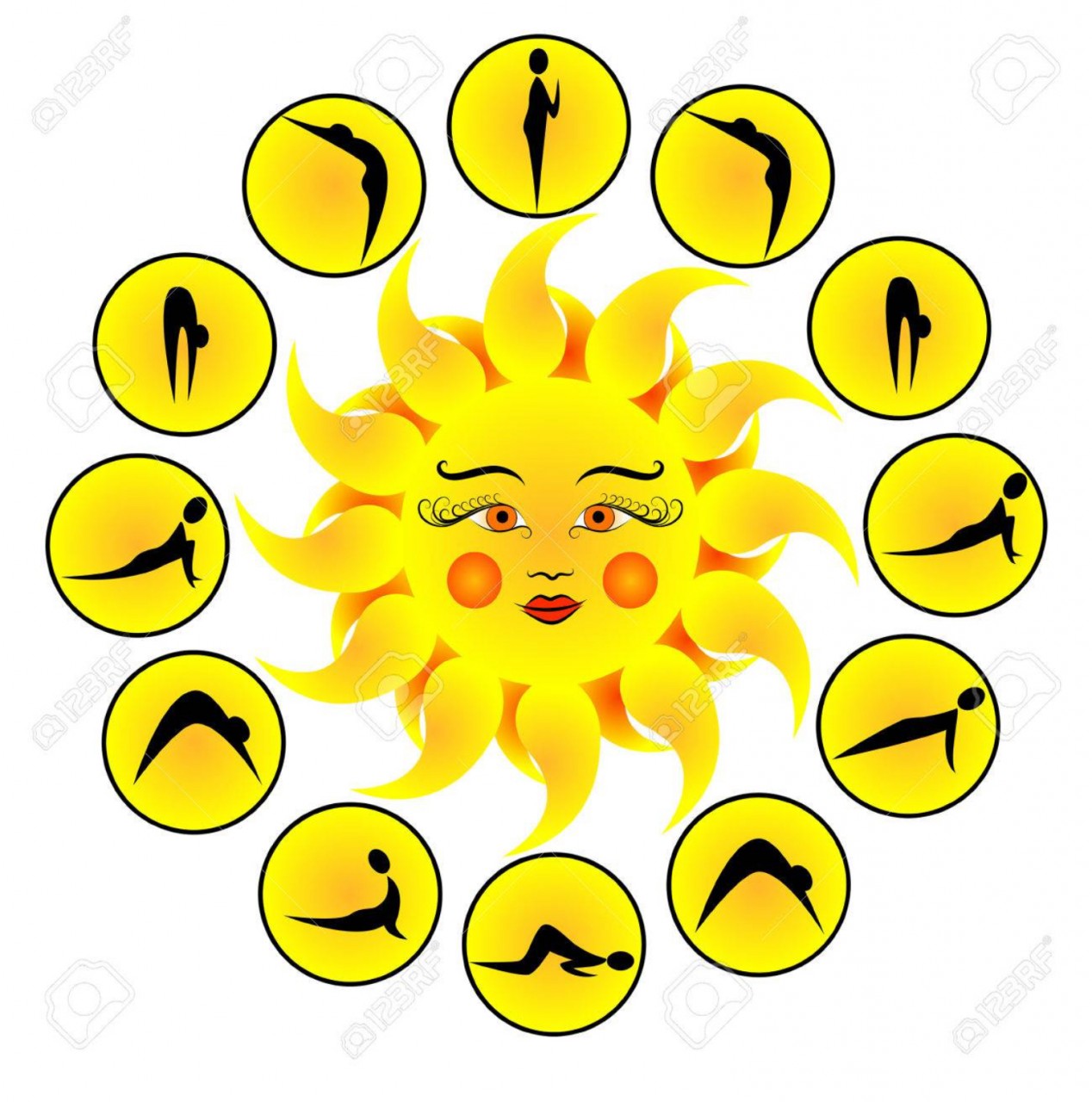SURYA NAMASKAR
Surya=Sun + Namaskar=Salutation
Hatha yoga has greatly emphasised the practice of Suryanamaskar
The twelve stances undertaken comprise six asanas that take a mirror movement from the half point to complete the twelve positions. At the basic physical level, Suryanamaskar works as a warm up practice towards Asana and the overall physical body including the endocrine, respiratory, circulatory and digestive systems. The Suryanamaskar Asana sequence are aimed at energising the solar plexus, Manipur chakra, at the navel- which in yogic physiology is the basis of the physical body. This is the plexus for the second mind, popularly called gut instinct, that is related to the vagus nerve, the tenth cranial nerve and the longest of the autonomic nervous system which is responsible for the body's unconscious functioning such as breathing, circulation and digestion and governs our happiness and social relationships.
The twelve stances within each of the two rounds of the total twelve of Suryanamaskar correspond to the movement of the sun in the 24 hour cycle. In yogic study, all rounds are co-related to the sun and have been given the twelve names of the sun: the third being the popular name Surya. The human body is made of the elements of fire, water, earth, ether and air. The sun is the universal element of fire and the wellspring of life. The fire element Agni is that which is the energy conversion factor in all forms of life and is a support of the universe in its microcosmic aspect- Virat, all encompassing. In its subtle aspect, it is hiranyagarbha, the cosmic womb. It is this same fire in the human physiology that sustains the body as warmth through to the last breath. In Ayurveda, this fire- Agni is known as as Deha(physical body)Agni and is further broken up into three large types to a total of thirteen sub types depending upon the location and function. Agni is the same as pitta dosha of Ayurveda as per Charaka.
Suryanamaskar is encouraged at sunrise when the sun rises, as a welcome to the sun. Water is offered to the sun along with mantra and it is through the emerging point of the trickling stream of water that the rising morning sunrays are to be viewed at in single gaze focus-the diamond like refraction of sunlight falling upon the physical eyes along with correct chanting of the surya mantra is absorbed into the mind psyche to awaken the third eye(correspondent to the pineal gland)at the eyebrow center. The pineal body is responsible for relation to the ultradian rhythms and also circadian. Ref: https://doi.org/10.1016/S0163-1047(80)90560-9
Each of the twelve rounds of Suryanamaskar is a half part of two cycles; in which one cycle uses either right side or left side of the body limbs predominantly. The 12 hatha yoga positions during the practice of Suryanamaskar activate the pingala(Sun channel,right nostril-sympathetic system) to give physical energy and a dynamic start to the day. This practice can be conducively manipulated by using the left side movement first to activate the Ida (moon channel, left nostril, parasympathetic system) to create a meditative spiritual practice of Suryanamaskar. Ideally, both sides are used in tandem during a round of two cycles ( one of right side and one of left side) to create a harmonious Ida-pingala flow of energy and bring about awareness of consciousness through planned movement of the physical body.
As per Ayurveda, the body moves from vata phase before sunrise to kapha phase after sunrise. Suryanamaskar at sunrise is the connect between the airy movements of Vata and the sluggish kapha to activate the fire of pitta-Agni. Thus actively bringing all three Dosha into play to bring optimal health as defined by Ayurveda.
AYURVEDA'S DEFINITION OF HEALTH
"sama dosha sama agnischa sama dhatu mala kriyaaha|
Prasanna atma indriya manaha swastha iti abhidheeyate" – Sushruta Samhita
Meaning: One is in perfect health when the Three doshas (vata, pitta and Kapha) Digestive fire (digestion, assimilation and metabolism) all the body tissues & components (Dhatus) (the entire physical body) all the excretory functions (the physiological functions of urination and defecation) are in perfect order with a pleasantly disposed and contented mind, senses and spirit.
For further growth in the yogic path, a control of and attunement of the breath and hence senses according to the phases of the sun and moon alongwith the bodily functions is essential. Suryanamaskar practice hubs this connection- from the active physical movement of dynamic Asana to the subtle breath and onward control of the mind body complex through the senses. This helps one live as a part of nature and in rhythm with the universe to bring about oneness with that universal consciousness, of which the Sun is representative.
The twelve mantras to the Sun:
1. ॐ मित्राय नमः Om Mitraya namah
2. ॐ रवये नमःOṁ ravaye namaḥ
3. ॐ सूर्याय नमः Oṁ sūryāya namaḥ
4. ॐ भानवे नमः Oṁ bhānave namaḥ
5. ॐ खगाय नमःOṁ khagāya namaḥ
6. ॐ पूष्णे नमःOṁ pūṣṇe Namah
7. ॐ हिरण्यगर्भाय नमः Oṁ hiraṇyagarbhāya namaḥ
8. ॐ मरीचये नमः Oṁ marīcaye Namah
9. ॐ आदित्याय नमः Oṁ ādityāya Namah
10. ॐ सवित्रे नम :Oṁ savitre Namah
11. ॐ अर्काय नमः Oṁ arkāya namaḥ
12. ॐ भास्कराय नमः Oṁ bhāskarāya namah
Suryanamaskar is a complete sadhana- spiritual practice, in itself for it includes Asana, Pranayama, mantra and meditation techniques.
'Asana Pranayama Mudra Bandha' by Swami Satyananda Saraswati



